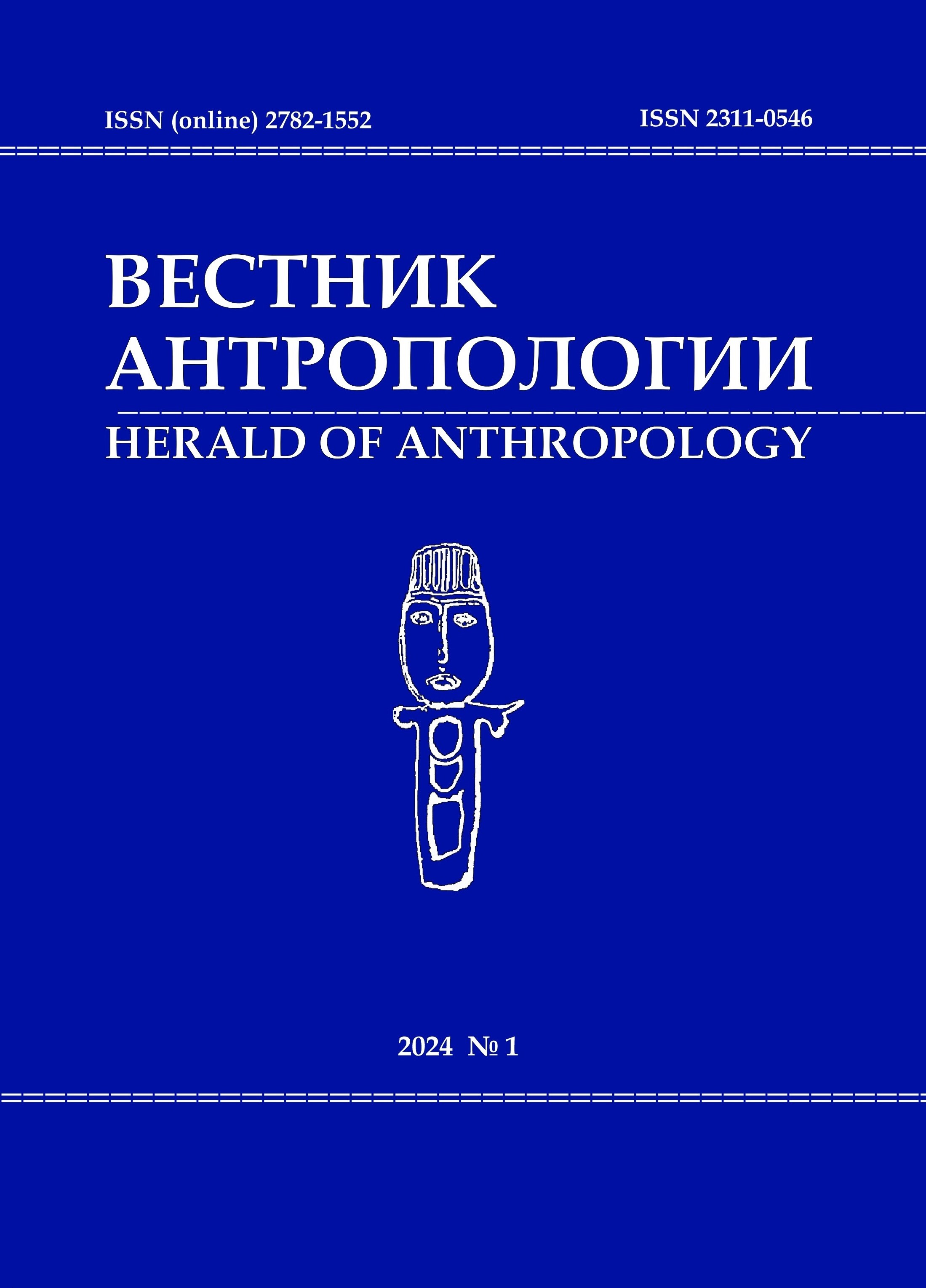Secular Trends in the Somatic Characteristics of Urban Abkhazian Children and Adolescents (1980-s – 2010-s)
10.33876/2311-0546/2024-1/348-368
Keywords:
biological anthropology, anthropological variability, secular trend, children and adolescents, growth and development, puberty, Abkhazian populationAbstract
The article presents the study of the morphological status of urban Abkhazian children and adolescents and its temporal dynamics over a thirty-year period. It is based on two samples of schoolchildren whose growth and development took place in different living conditions. The first sample’s children (1980) grew up in stable conditions of traditional Abkhazian life, while the second sample (2012) consists of schoolchildren, whose growth took place in dynamically changing socio-economic conditions after a period of social upheaval. The methods include an intergenerational analysis of the indicators of somatic development of puberty boys aged 13–15 years and girls aged 10–16 years from the city of Sukhum (Republic of Abkhazia) and two surveys conducted in 1980 and 2012 (a total of 1,423 people) according to a single protocol. The study revealed gender specific secular dynamics for Abkhazian children. For males aged 13–15 years, temporary stability of the shoulders and pelvis width, and the diameter of the chest, with an increase in body length due to an increase in the length of the leg, was observed. For girls, with the stability of the longitudinal proportions of the skeleton, a temporary trend towards leptosomization of the physique was observed: a decrease in the width of the shoulders and pelvis, and the definitive parameters of the chest in the transversal plane. Modern Abkhazian girls and boys of younger ages are characterized by an increase in body weight with a higher frequency of overweight and obese people among them. The topography of subcutaneous fat deposition is changing to the "truncal" type, which may be a predictor of unfavorable prognoses of the health status for the new generation. It was revealed that during the observation period the pace of growth of modern Abkhazian children has become higher and the puberty has accelerated, which is especially pronounced in boys. The changes observed in the study may probably be the result of adaptation to the changes in the traditional way of life of the population. The obtained results demonstrate the important role of environmental factors in the formation of morphological status while genetic factors are stable.





















